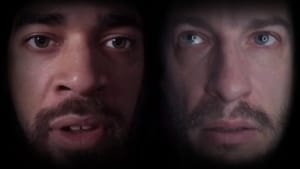Stay in the Loop
BSR publishes on a weekly schedule, with an email newsletter every Wednesday and Thursday morning. There’s no paywall, and subscribing is always free.
A step forward in shutdown
The Wilma presents ‘Code Blue,’ a digital performance open to all

The COVID-19 pandemic and the national reckoning with racism intersect in Code Blue, a gripping short play presented online by the Wilma Theater. The digital offering, which was created and produced entirely within social-distancing guidelines, also represents a possible step forward for a stalled industry grappling with an indefinite shutdown.
It’s painfully ironic that theatrical institutions are closed at a time when they’re needed most. Although the closure is necessary, it deprives artists of an avenue for comment on the social movements that have swept the country, making lasting fundamental change feel possible. Although art that attempts to engage rapidly with current events isn’t always successful on its own terms, it serves as a durable capsule of a moment’s impact.
Compelling comment
Code Blue—written by Wilma co-artistic director Blanka Zizka and performer Anthony Martinez-Briggs and directed by Zizka—succeeds as both a comment on the state of the world and a compelling piece of performance art. In 14 minutes, Zizka and Martinez-Briggs, along with actor Ross Beschler and sound/video designer Taj Rauch, bracingly confront the rot at the heart of the American landscape that has left tens of thousands dead, both from disease and from intolerance.
Neither of the two characters who dominate the playlet receive a name, but each is an easily recognizable figure. Beschler embodies the Trump faithful, a particular breed of person who takes the president’s word as gospel, who casually peppers his speech with dog whistles and seething resentment. He labels the novel coronavirus a hoax and a Democrat plot, a stance buoyed by Trump’s own divisive rhetoric.
Martinez-Briggs represents the opposite side of that coin—an ambitious young man who takes a survival job as a hospital cleaner only to find himself in the eye of a sudden storm. He soon finds himself reclassified, a newly minted essential worker, in a world where “essential means expendable” and those working minimum wage are forced to weigh their health against their paychecks.
Off-stage elements
The digital design of the piece allows the actors and artists to make good use of elements that wouldn’t necessarily be available in a traditional theatrical performance. Rauch overlays the voices of Beschler and Martinez-Briggs to create a cacophony that suggests the echo chambers that sometimes persist, as one person’s chants of “USA!” drown out the testimony of lived experience coming from another’s mouth. Since Beschler is tasked with playing someone who feeds on paranoia and conspiracy theories, this aural element reinforces the growing, troubling trend of shutting out any information that doesn’t instantly validate one’s own perspective.
The camera also lingers on tight close-ups of areas of each actor’s face, reinforcing the subtexts of scenes. Beschler’s mouth becomes almost disembodied, merely a vessel for disseminating propaganda. Martinez-Briggs’s eyes look hooded one moment, hopeful the next, as he tries to find purpose in his situation and persevere. A single, well-deployed tear communicates something beyond words.
Meaning and resonance
Zizka noted in a press release that the germ of Code Blue began “as an angry reaction to the dangerous banalities of Donald Trump's COVID-19 briefings.” It certainly still functions as such. But in the wake of protests sparked by the police killings of George Floyd, Breonna Taylor, and other Black people across America, it takes on a further tragic dimension. Trump and others are still using their megaphones, but now, it is just as often to endanger and decry those who are pursuing social change. And people like the man Beschler plays continue to lap it up.
The meaning and resonance of art shifts with the larger cultural moment. A work like Code Blue, which began as a response to one issue and has come to encompass much more, gives voice to the essential function of art as social commentary. I’m glad that Zizka, Martinez-Briggs, Beschler, and Rauch—along with lighting designer Thom Weaver and costume designer Vasilija Zivanic—were able to meet the moment and create something vital, especially under nonoptimal circumstances.
A thrilling prospect
Code Blue is available to stream for free on the Wilma’s website, with donations suggested. This access will allow more people to engage the content than could ever do so within the confines of a standard performance—a thrilling prospect, given what the work itself has to say. The creativity and availability of the piece sets a bar other companies should strive to reach now.
What, When, Where
Code Blue. By Blanka Zizka and Anthony Martinez-Briggs. Directed by Blanka Zizka. It’s available to stream here, for a suggested donation.
The performance is closed-captioned.
Sign up for our newsletter
All of the week's new articles, all in one place. Sign up for the free weekly BSR newsletters, and don't miss a conversation.

 Cameron Kelsall
Cameron Kelsall